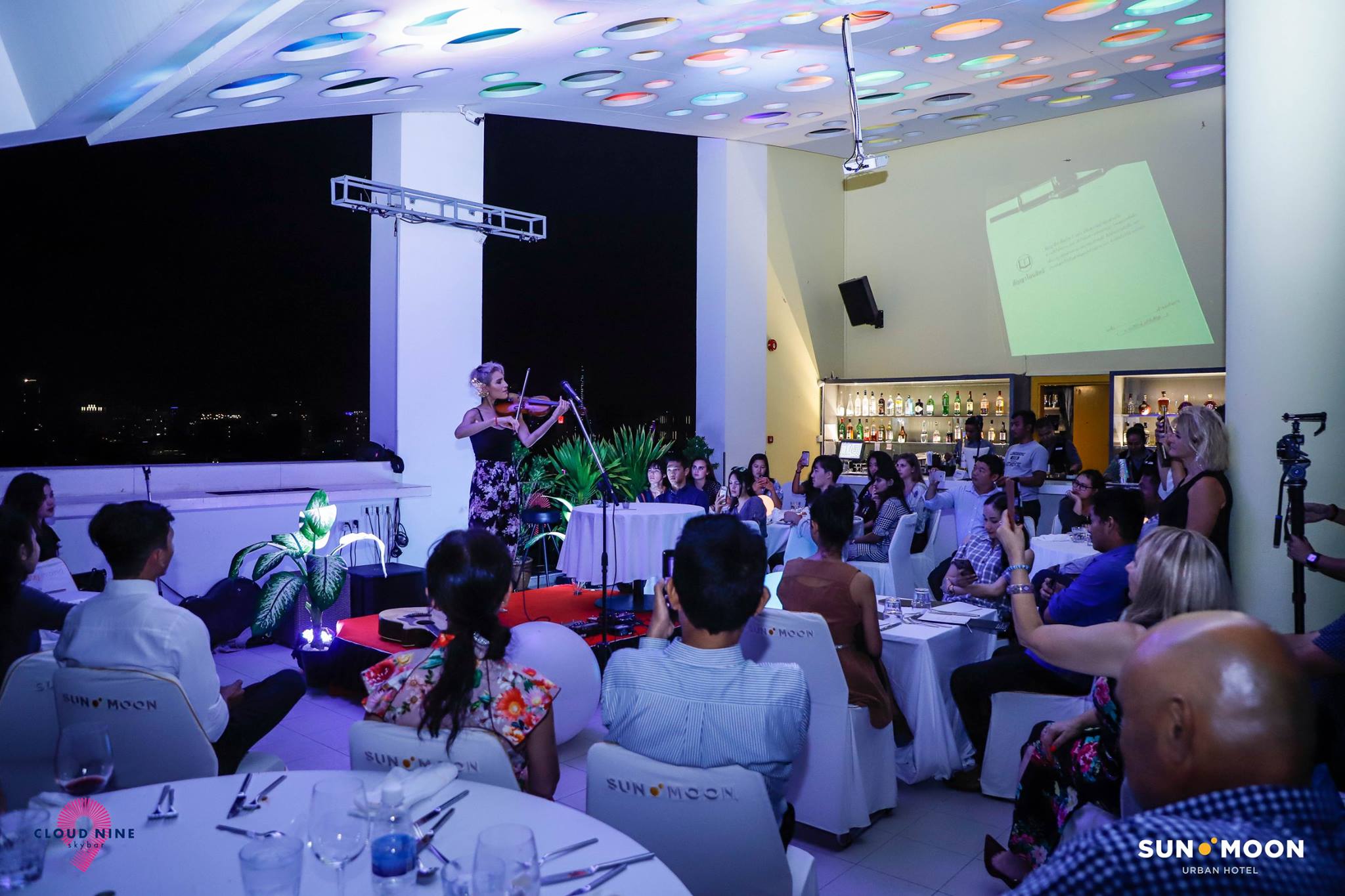
You’ve reached Part 4 of the Introductory Course to Improving Autistic Accessibility in Music, and this one’s full of action! Today, we get into the nuances of common things you will stumble upon as you increase your autistic awareness and start organizing with autistic people in mind. I offer pro-tips, concrete ways to take positive action, and sample scripts for a variety of music-related scenarios.
If you need to review the basics, check out the primer in my Open Letter From Your Autistic Colleague, the epic Master Guide to Improving Autistic Accessibility in Music, and the Q&A featuring questions submitted by musicians and organizers. Now, here we go!
Quick navigation
[banneradvert]
Pro-Tips
- Do not argue with someone who tells you they are autistic, even if you “don’t believe them.” Why don’t you believe it? Unravel your assumptions about what an autistic person looks and acts like. Keep in mind that some autistic people may blend in more than you think.
- “But you act so normal!” Please do not utter that phrase in the vicinity of autistic people. Other variants include “ You don’t seem autistic,” “I couldn’t even tell!” and “I see beyond that; all I see is a talented musician and friend.” These are not compliments; they are indications of your discomfort with acknowledging autism and make us feel pressured to maintain our “normal behavior” in front of you. Appropriate responses to someone telling you they are autistic include “Cool,” “I didn’t know that!” and “How is this space for you, by the way? Let me know if there’s anything in particular I can do in our future interactions, as I’d love to help make sure you’re comfortable, even when you don’t want to speak up.”
- Adult diagnoses are a thing. In fact, many autistic people are diagnosed as adults, particularly women, non-binary, and other gender non-conforming people. The old diagnostic criteria for autism had a strong male bias and thus favored male diagnoses. In addition, social pressures can cause girls to learn how to mask their autistic traits or remove themselves as a means for survival. Luckily, medical and mental health professionals are starting to catch up and look out for more varied sets of traits now. I was diagnosed as an adult as well. You can read more about that here.
- Self-diagnoses are valid. Some people are self-diagnosed, and in most of the autistic community, we validate that. It is a matter of privilege and access. Pursuing assessment and diagnosis is expensive, and many people lack the resources to obtain to that kind of “proof.” Unfortunately, that “proof” is sometimes necessary for gaining access to accommodations. In my mind, getting an autism diagnosis is like getting a diploma to hang on the wall to prove that you went to school. But even if you never picked up your diploma, it doesn’t mean you didn’t go through the classes too.
- “I don’t have any spoons left.” Have you heard of the spoon theory? It was a term coined by Christine Miserandino that provides a helpful metaphor for assessing physical and emotional energy among disabled and chronically ill folks. Many autistic folks use the metaphor of spoons to describe their capabilities and energy. As an ally, it would be helpful to understand what this means; otherwise, you will likely become confused when it comes up.
- Don’t guilt an autistic person into attending something, even if you’ve made specific accommodations on their behalf. Like any other person, sometimes, we just don’t show up. Maybe we’re tired, anxious, out of spoons, need a different accommodation, or have reasons unrelated to you. Don’t make us feel bad that you provided for us; in fact, making a big deal about your accommodation effort puts unnecessary pressure on others and can signal that you aren’t interested in being an autistic ally unless you’re getting recognized for your “benevolence.” Plus, even if your friend doesn’t attend, there may be another autistic person in your audience who still appreciates the safer space nonetheless.
- Autistic people can have specific clothing needs. This is largely due to sensory issues with fabrics, cuts, and breathability but can also be attributed to other things. If you notice an autistic person wearing what you think is unusual clothing or shoes, don’t give them flak for it. If you manage performing artists for shows, consider offering lenient costume options or being open to accommodating those with clothing-related sensory issues. It could be as simple as allowing a different fabric, a looser-fitting option, or a sweater. I’ve written about my own clothing specifics several times.
- We don’t want to hear about a cure. Don’t talk to us about curing autism or supporting research that cures autism. Also, keep in mind that ABA (Applied Behavior Analysis) therapy is very controversial in the autistic community. Many of us do not support it and/or have been damaged by it. If you’re interested in treating symptoms associated with autism, first try changing your environment to make it more accomodating for autistic folks. I’ve written more on that subject here.
- Avoid using functioning-labels like “high-functioning” or “low-functioning.” While some autistic people use them, this is also a point of controversy in the autistic community. The short explanation is that these are judgments from the perspective of neurotypicals, autistic people contain various combinations of supposedly “high” and “low”-functioning abilities, this all creates a hierarchical divide in the autistic community, and it leads to self-described “high-functioning autistics” excluding so-called “low-functioning autistics.” If you’re trying to refer to an autistic person’s capabilities for the purpose of planning something more accurately and safely, just be specific about what you need (i.e. “autistic folks who can drive” or “autistic people who don’t require supervision in a public place”). But if you’re allistic, just let us handle this mess within our community; you should avoid the terms altogether.
- Ask before touching. This includes handshakes, hugs, and good-natured pats on the shoulder.
- The pattern of opposite extremes among autistic people is truly a grand irony. This irony, which we’ve covered in previous parts of this series, refers to the fact that various autistic people have vastly different — if not outright opposite — needs. For example, one autistic person may have an extreme aversion to heat, while another has an extreme aversion to cold. Moreover, these needs are often not consistent within the same person. For example, I detest being touched most of the time but also crave deep, extreme pressure in other instances. If you’d like even more specific examples, check out this post from Lydia X.Z. Brown’s Autistic Hoya blog; it’s the best articulation of the phenomenon that I’ve read so far.
- Don’t expect us to be prepared. An allistic person once asked if I could make a list of helpful compensatory aids to distribute to fellow autistic people — along with specific brand recommendations and costs — so that we could start better providing for ourselves. Their explanation was that “most places cannot be accommodating of all special needs groups” and that “preparation on both sides is key.” A lot of this is true! It’s impossible for a place to be 100% accessible for everyone, and of course, self-planning can help. But this is not an inclusive notion to operate under, for many reasons. First, many autistic people cannot afford a plethora of ideal aids, especially if they are high-quality. I’ve seen the length of the waitlists for weighted blanket donations. Second, not everyone has the executive functioning capabilities, physical ability, or space to obtain, manage, remember, and hold onto all of the things they need. If I carried all of the things that made me comfortable at events, I would need a suitcase. Thus, if I know in advance that, say, temperature won’t be a problem and noise won’t be an issue, then I can leave my blanket and fancy headphone case at home. Another thing: Autistic people may not recognize or know how to name their triggers or needs; they may only recognize that they are feeling bad. And finally, autistic people already do swap information, try different solutions, and put a huge amount of pressure on themselves. Accessible spaces are still necessary.
- Provide gender-neutral restrooms and ask pronouns. Get in the habit of taking action to ensure that your space is gender-inclusive. Three big reasons: 1) Intersectionality. Many autistic people are gender non-conforming or queer (really, it’s kind of a thing), and yet most people don’t facilitate safe spaces to hold both identities. Regardless, don’t you want to make your space more welcoming anyway? 2) Cognitive difficulties can prevent autistic people from speaking up, making decisions, and processing information, so being misgendered, having to decide which restroom to use, or being bullied at your event could have heightened serious effects for an autistic person. Likewise, not knowing which pronouns to use — or not knowing how to disclose pronouns — can prevent a gender non-conforming autistic person from speaking or feeling included. 3) Some autistic people may need help or accompaniment in restrooms, and if their caretaker, friend, or family member is a different gender, this could cause embarrassment, harassment, or medical issues.
- Autistic accessibility doesn’t negate the importance of physical accessibility. A reader of this series submitted the following comment, and I think it’s important to address: “I am autistic and have a physical disability as well. I use a cane to walk, can’t stand for a long time, and cannot be in places with flashes of light because of epilepsy and seizures. This makes it very hard to navigate any venue, particularly music events that are in bars, with standing room only, or that have several obstacles to getting in the event. Because many people lump autism with disability, venues will work on autistic accessibility while not creating a place that accommodates physical disability. It is not comfortable.”
It is not okay to brush over needs like the ones described above. While many autistic people proudly and validly identify as disabled, autistic accessibility alone is not a substitute for all forms of accessibility, nor should it be conflated with physical disabilities. Organizers who either lump the two together or assume that taking care of one is “sufficient enough” to cover “all the disability bases” do a disservice to all disabled people and their loved ones. Able-bodied autistic folks need to be more mindful of this, too.
Here’s the thing: accessibility is not a concern to brush over, and that goes for autistic, cognitive, sensory, physical accessibility, and more. Your events really must be physically accessible. In fact, in many instances, it is federal law. Unfortunately, ADA requirements barely scratch the surface of accessibility, but knowing that there is a minimum requirement in this (not-so-inclusive) nation in the first place says something about the importance of this matter. You can do better than this bare minimum. Whenever in your power, make sure to accommodate both manual and power wheelchairs in the entrances, restrooms, and seating areas, provide clear paths to move through, and provide wide, sturdy seating options for folks who need to sit down. Be aware of other power-driven mobility devices (OPDMD) too, and be prepare to welcome them (depending on your venue, it may also be law).
Many people reading this series are musicians who put on smaller concerts in alternative spaces. I know you may not have the power to change the venue you rent, nor might you be able to secure a place in your budget, but you can still do things to make your space more physically accessible. Talk to the venue owners (or house owners). Ask if certain entrances can be used, if there can be someone on hand to assist guests, and if furniture can be moved to provide bigger pathways. If chairs are small and flimsy, try to add seating that can hold more weight and bigger sizes, otherwise fat people won’t be able to sit. If you’re looking for a house concert venue, consider asking hosts if they have accessible restrooms and entrances. No matter what venue you end up choosing, remember to be transparent in your invitations, clearly stating what you are and aren’t equipped for.
People who want to attend artistic events exist in all kinds of bodies and have all kinds of needs. This includes wheelchair users, fat people, autistic people, visually impaired people, folks who use canes or walkers, and people who sometimes use aids but sometimes do not. It includes both visibly and invisibly disabled people, as well as those with multiple disabilities. If you haven’t seen much physical diversity at concerts before, it’s probably because most concerts aren’t sufficiently accessible to begin with.
Take More Action
- Contact venues on your own to discuss accessibility. Did you go to an event and notice an area for improvement? Perhaps there was incomplete information, sound bleed from the adjacent room, extreme temperatures, or unaccommodating procedure. Let them know! Ask if something can be changed, or if more information could be added to the announcements and event details beforehand.
- Offer to help venues or donate items. If you notice something that’s not autistic-friendly, you could take your suggestion a step further by offering to help. You could volunteer to write out the details that are missing on the venue page. You could offer to make relevant signage. Or even donate or offer to buy items that could help (like seat cushions, stim toys, comfortable chairs, sunglasses, earplugs, blankets, weighted blankets, etc.). I’m not suggesting you randomly donate all these things to places; have a conversation first.
- If you have more info, share the info. If you see an invitation and notice a lack of logistical or accessibility details, ask the organizer if they can provide more information. But if you yourself know further information that could be shared, go ahead and share that! If it’s a Facebook event, for example, you can make a post saying “Dress code is casual, and parking is $3 cash only. There is a small step up going into the space that might not accommodate all wheelchairs. Folks with with sensory sensitivities, please note that floral scents will be used in the performance, there are also fluorescent lights overhead, and the room gets loud during amplified pieces, so plan accordingly.”
- Make everyday thoughtfulness part of your routine. The more aware you are of autistic accessibility needs, the better you will be able to notice them. I was overwhelmed and agitated at an important group meeting in a loud coffeeshop one day, when someone asked very matter-of-factly, “Chrysanthe, do you want to go inside the quiet office nearby?” I said yes, and we moved without further conversation. She didn’t need me to thank her or praise her awareness; it was just the thoughtful thing to do.
- Be careful which organizations you support. Unfortunately, many of them do not have autistic people in their leadership or don’t truly serve autistic people at all. The biggest autism organization in the world is one of the biggest offenders. I considered omitting the name, but because Autism Speaks harms and triggers many autistic people to hear about, I want you to be aware of that. The iconic blue puzzle piece logo and “Light It Up Blue” campaign are also closely associated with them, so autistic people participate in the “Red Instead” campaign. Feel free to look up “Autism Speaks boycott,” if you’re interested in seeing years of extensive writing on the subject. On the other hand, if you’d like to explore the work of pro-autistic efforts, check out Autistic Self Advocacy Network (ASAN), Autism Women & Nonbinary Network, Respectfully Connected, Parenting Autistic Children with Love and Acceptance (PACLA), and other autistic-run groups instead.
- Support local efforts and individual autistic people or projects. It’s not just about the big orgs. In fact, it can be even more powerful to support smaller or grassroots efforts. Are all the venues in your hometown accessible? Can you see areas for improvement in the spaces you frequent? Do you consume, like, and learn from the content of autistic bloggers, YouTubers, and artists? Many autistic people have alternative careers due to workplace discrimination, inaccessibility, or other needs that aren’t conducive to a traditional structure. Support those creators and activists. Think of all your activities and interests and see if there’s room to improve your little corner of the world or amplify autistic voices. Is your cooking club autistic-friendly? How about your thrifting aficionado Facebook group? If you love literature or podcasts, throw some support behind an autistic book project or podcast. There are so many autistic people creating change and adding their unique voice to the world on a daily basis. Support. Them. (Us.)
- Google “actually autistic” and search the #ActuallyAutistic hashtag on Twitter and Instagram. This hashtag and label is what many autistic people use to share their stories, humor, ideas, and experiences. You can also try #AskingAutistics on Twitter. If you have a question for #AskingAutistics, be sure to disclose whether you are non-autistic.
Sample scripts
Stimming PSA
Last week, someone asked for a suggestion regarding how to tell audiences that simming and moving are okay, as well as good ways to let allistics know that this may be happening. I suggested writing a “stimming PSA” and including it on programs, event pages, signs, and in verbal announcements. There’s no perfect way to do this that prevents all issues and pushback, but it’s worth a try. Here’s an example of a stimming announcement that you can make.
“This event is a stim-positive space! All means of expression are valid, and we want you to express yourselves comfortably — whether that means sitting still or flapping your hands. We ask that you refrain from touching other people, but if you’d like to make noise or move around beyond the confines of your seat, you can do so freely in [designated spot]. [State whether the entertainment will still be viewable or audible from that spot]. Last but not least, respect is required for all, so if you notice a means of expression that you’re not used to — and as long as it’s not harming anyone — be kind.“
Emailing a venue about accessibility
Option 1:
Dear ___________,
I’m hoping to attend your event next week but wanted to check on a few accessibility things beforehand.
First, will there be ____________? Second, might there be an option to ____________? Third, can you provide more details about ____________?
___________[I, My friend, Many of my colleagues, etc.] am/are autistic, which can make it difficult to ___________ and ___________. Knowing your answers in advance could help me plan better or know what to expect before confirming my ticket.
Anyway, your concert sounds right up my alley, so I hope I can be there! ___________ is simply the best…
Thanks so much,
___________
Option 2:
Hi there,
I’m really hoping to attend your event tomorrow, so could you help me by answering a few questions about accessibility? I am autistic and have trouble ____________.
First, is there more information you could provide in advance about parking, restrooms, and ____________? Having more information would lighten my cognitive load and help me plan.
Second, is the venue air conditioned and/or heated? I am very sensitive to ____________ and would like to come prepared either way.
Thanks so much. Hope to be there!
____________
Option 3:
Dear ____________,
Spectacular performance of ____________ last night! I particularly loved the ____________.
I noticed something in your venue that I wanted to make sure you’re aware of: The ____________ in the ____________ is quite ____________, which can make it difficult for autistic folks and other people with cognitive or sensory needs to ____________. Perhaps you could try ____________ instead? [Optional: Something like that would certainly make it easier for me/my ____________ to attend in the future.]
Thanks for considering! I’m happy to help with the endeavor if I can. Bravo again on the concert.
Sincerely,
____________
Calling out ableist language
Ableist language runs rampant, even in progressive communities. It is often unintentional and due to lack of awareness. If you notice ableist language, it can be difficult to speak up, but we all must try. Check out this great list of ableist terms and alternatives to consider. Here are some ideas for how to phrase these tricky conversations:
“What do you mean by ____________? Do you just mean ____________ instead? Okay, yeah, let’s use that instead, because ____________ is actually considered ableist, and I know you’re not trying to be like that.”
“Whoa, I haven’t heard that word in so long! Turns out, it’s actually a huge bummer for people with cognitive impairments. I think what you meant was ____________, right? You normally don’t use ableist language, so I’m telling you this because I know you care.”
“Oof, I totally agree with your sentiment, but that’s not a word I like. Can we say ____________ instead? I don’t want to make ____________ people feel unwelcome.”
“Hey, I think you accidentally used an ableist slur. Did you mean that? It’s interesting how language can be so ingrained in our culture that we totally forget about the origins.”
“Heads up, you used an ableist term on page 3: ____________. A lot of people don’t realize it’s a degrading word, but once you know it, you can’t unsee it… If you think about it, it makes sense why it’s offensive.”
“Trust me, I make mistakes all the time. Some of this stuff is so ingrained that we never realized what we grew up saying. Good thing we’re still learning now, because yikes! Glad that word is gone from my vocabulary.”
“Hey, I know you don’t mean it that way, but that phrase is actually considered derogatory toward people with disabilities.”
This concludes our four-part series on Improving Autistic Accessibility in Music. Thank you to NewMusicBox for giving me this platform. And thank you, readers, for your time, for putting art into the world, and for your commitment to improving accessibility for autistic people.
If you’d like to contact me personally, request an autistic accessibility consultation, listen to my music, join my artistic family, commission work, or talk to me on social media (@chrysanthetan), the proper links are below.
Professional: Website / Email / Spotify
Social: Twitter / Instagram / Facebook / YouTube
Personal: Patreon
Sincerely,
Chrysanthe






